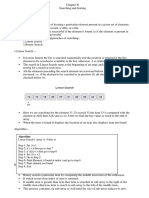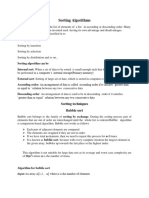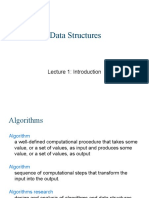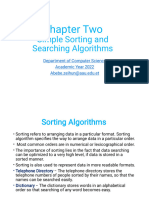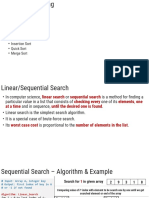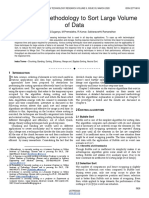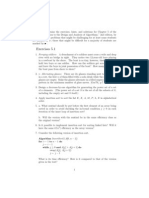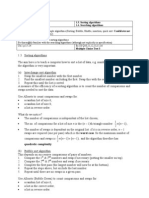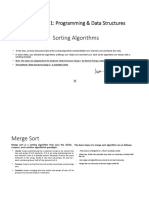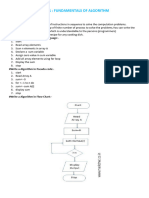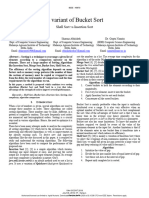0% found this document useful (0 votes)
7 views72 pagesSorting N Searching-Unit 1
The document provides an overview of searching and sorting algorithms, detailing types such as linear and binary search, as well as sorting methods like bubble, selection, insertion, merge, quick, radix, and heap sort. It discusses the advantages and disadvantages of each algorithm, their time complexities, and the importance of algorithm efficiency. Additionally, it highlights the significance of sorting in various applications and the factors affecting algorithm performance.
Uploaded by
tyagiamodhCopyright
© © All Rights Reserved
We take content rights seriously. If you suspect this is your content, claim it here.
Available Formats
Download as PPTX, PDF, TXT or read online on Scribd
0% found this document useful (0 votes)
7 views72 pagesSorting N Searching-Unit 1
The document provides an overview of searching and sorting algorithms, detailing types such as linear and binary search, as well as sorting methods like bubble, selection, insertion, merge, quick, radix, and heap sort. It discusses the advantages and disadvantages of each algorithm, their time complexities, and the importance of algorithm efficiency. Additionally, it highlights the significance of sorting in various applications and the factors affecting algorithm performance.
Uploaded by
tyagiamodhCopyright
© © All Rights Reserved
We take content rights seriously. If you suspect this is your content, claim it here.
Available Formats
Download as PPTX, PDF, TXT or read online on Scribd
/ 72

















